
Oculus VR Posts Recommended System Specs For Rift - Outlines Platform Goals
For all of the public Oculus Rift demos so far, the demo systems have been driven by very powerful hardware, and for good reason. With the need to double-render a scene (once for each eye) along with keeping latency to an absolute minimum, Oculus and game developers alike have not been taking any chances on performance, always making sure they have more than enough to work with. Since the very first Rift demos GPU performance has improved at a decent clip, but rendering a scene quickly in 3D is still a demanding task.
As a result we’ve known since the earliest days that the system requirements for the Rift would be rather high. But of course with the device still in development – and not just the headset, but the sensor suite as well – the system requirements were still in flux. Today via an announcement on their site, the Oculus team has revealed their recommended system specifications and how they’re treating these as much more than a minimum.
First, the system specification recommendations:
- NVIDIA GTX 970 / AMD 290 equivalent or greater
- Intel i5-4590 equivalent or greater
- 8GB+ RAM
- HDMI 1.3 video output supporting a 297MHz clock via a direct output architecture
- 2x USB 3.0 ports
- Windows 7 SP1 or newer
Overall the recommended specifications are not too far off from the specs of many of the Rift demo systems, and in fact they may be a bit lower. The GPU recommendations only call for a $250+ video card despite the GPU generally being the bottleneck (and many recent demo systems using multi-GPU configurations for that reason). Meanwhile everything else is about as expected, with users wanting a fast Intel quad-core CPU, plenty of RAM, an HDMI port to connect to the Rift, and USB 3.0 ports for the Rift to feed sensor data back to the host PC. Essentially any modern mid-to-high end gaming PC should meet these requirements.
While explaining the specifications, Oculus also took a moment to note that while laptops are not formally excluded from running the Rift, they likely will run into issues. Along with the weaker GPUs on laptops, most laptops are using NVIDIA Optimus or AMD Enduro technology to slave the discrete GPU to the integrated GPU, which means that the dGPU doesn’t have a direct output, rather it goes through the iGPU and its outputs. This is where the “direct output architecture” part of the specifications come in; Optimus/Enduro are not supported, and for laptops to work the dGPU will need to be able to directly drive an HDMI port, which is something that very few gaming laptops do.
Finally, along with releasing the specifications, Oculus is also outlining how they want developers to treat the specifications, and how they want to see the Rift developed against as a single, stable, long-term platform. As Oculus wants to increase Rift adoption over time and deliver a consistent experience, they are asking that developers treat these recommended specifications as a quasi-singular platform, optimizing their games around these specifications over the long-haul. This way as Rift prices come down and lower-end PC performance goes up, consumers assembling these cheaper Rift systems will be able to pick up a Rift and play new games just as well as launch hardware plays launch games and new games alike. In essence Oculus wants to setup a loose approximation of the console ecosystem, having developers optimize against an unchanging baseline so that PC spec creep doesn’t slowly ratchet up performance requirements as what happens today with PC games.
The reality of course is that these are just developer suggestions, but it’s an interesting idea that makes a lot of sense given the fact that Oculus will need time for developer and consumers to adopt the Rift en masse. Suggesting that developers optimize around a fixed point ensures that costs come down over time, and launch buyers aren’t quickly left behind. That said, optimizing a game around a specific point and making that point a game’s maximum settings are two different things; given how well VR scales with multi-GPU setups, I wouldn’t be the least bit surprised to see some developers treat these recommendations as minimums, and offer better graphical effects for more powerful systems.
Read More ...
ASRock Releases Cherry Trail Mini-PC: The Beebox
The mini-PC revolution has passed a lot of regular computer users as something that happened but might not be that interesting, especially if you are used to the lights and flashier elements of the industry. Despite this, sales of mini-PCs and the development of the platform has been a nice money earner for several companies, and as a result we have Intel’s NUC, GIGABYTE’s BRIX models, Zotac’s mini-PCs, ECS’ Liva and many others tackling this market. Technically this market has two main differentiators – whether the box uses an Atom SoC or something a bit more powerful. For the latter ASRock has had the Vision range of mini-PCs which have been interesting to look at (read Ganesh’s review of the VisionX here), but the mini-PC range they had with Bay Trail gets a new name, a new look and a new upgrade with the ‘Beebox’.
The Beebox is a 0.6 liter chassis design featuring the Intel Celeron N3000, a dual core 14nm Airmont (Braswell) SoC from the Cherry Trail line with a base frequency at 1.4 GHz with turbo up to 2.08 GHz. Due to the 4W TDP these are fanless designs supporting both an mSATA and 2.5” SATA drive with gigabit Ethernet, 802.11ac WiFi, a Realtek audio codce, dual HDMI and a single DP video output as well as both USB 3.0 Type-A and USB 3.0 Type-C.
There will be two full system variations – one with Windows 8.1/10, 1x2GB of DDR3L-1600 and a 32GB mSATA SSD, and one with no OS but 2x2GB of DDR3L-1600 and a 128GB mSATA SSD. There will also be a barebones chassis requiring users to supply their own DRAM and storage.
It’s worth noting that the Celeron N3000 integrated graphics uses the same Gen-8 graphics as Broadwell but in a low power configuration, which means for this SKU we get 12 execution units but running at a maximum of 600 MHz. This should be suitable for light gaming. Given the two SO-DIMM DDR3 slots, normally I would assume the SoC would support 8GB and 16GB modules, if you would happen to need them, but according to official specification sheets the SoC is only rated to 8GB maximum. ASRock is telling me it at least supports a 2x8GB configuration however.
ASRock is promoting its Beebox due to the connectivity, supporting three screens from the three video outputs all in one go including 4K from the DisplayPort, and the Type-C port which allows for 15W fast charging modes. The 802.11ac is welcome, although it should be noted that it is only a single stream implementation.
The Beebox will be available in three colors (black, white and gold), and measures approximately 11cm x 12cm x 4.5cm. Pricing is yet to be announced, but it should start appearing on shelves in the US at the end of June.
Source: ASRock
Read More ...
Corsair Now Retailing 128GB UDIMM DDR4 Kits, Starting at $1755
Not much exciting happens in the land of DRAM I know – usually the most exciting things occur when we get a standards change, or when capacities increase. Luckily for DRAM manufacturers we got the first taste of consumer grade DDR4 back in 2014, and almost a year later in 2015 we are now seeing capacities double per module from 8GB to 16GB. We reported on one company promoting their 16GB modules, specifically an 8x16GB kit for 128GB, and now it is the turn of Corsair who is guaranteeing US availability as this press release went live direct from the Corsair website.
Corsair is launching three kits as follows:
| Corsair DDR4 128GB Kits | |||||
| Vengeance LPX | 8x16GB = 128GB | DDR4-2400 | 14-16-16-31 | 1.2 V | $1755 |
| Dominatior Platinum | 8x16GB = 128GB | DDR4-2400 | 14-16-16-31 | 1.2 V | $1980 |
| Dominatior Platinum | 8x16GB = 128GB | DDR4-2666 | 15-17-17-35 | 1.2 V | $2120 |
Aside from the price, the timings are naturally quite interesting. JEDEC specifications for DDR4 come in at DDR4-2133 15-15-15, and most of the modules we saw at the release of DDR4 were on those lines, moving up to DDR4-3200 with a slow rise in subtimings. The first two kits from Corsair, the Vengeance LPX and Dominator Platinum, arrive at DDR4-2400 14-16-16, indicating a rise in frequency and a decrease in CAS latency, all while retaining the nominal 1.2 volt specification from JEDEC rather than jumping up to 1.35 volts. Nice.
The other kit in the stack is at DDR4-2666 15-17-17, also at 1.2 volts, which is somewhat in-line with the 8GB module kits we have seen so far. Using our Performance Index rating, as described in our large run-down of DDR4 module performance earlier this year, puts each of the kits as the following:
Vengeance LPX 128GB DDR4-2400 C14 = 2400/14 = 171
Dominator Platinum 128GB DDR4-2400 C14 = 2400/14 = 171
Dominator Platinum 128GB DDR4-2666 C15 = 2666/15 = 177
This is around the Performance Index of the midrange kits for both DDR4 and DDR3, indicating a level of performance in that area.
The pricing on the other hand commands a distinct premium. The Vengeance LPX kit starts at $1755, with the Dominator Platinum 2400 C14 kit moving to $1980. At the top sits the 2666 C15 kit, by virtue of the higher frequency, at $2120. This means per GB:
Vengeance LPX 128GB DDR4-2400 C14 = $1755/128GB = $13.71 per GB
Dominator Platinum 128GB DDR4-2400 C14 = $1980/128GB = $15.47 per GB
Dominator Platinum 128GB DDR4-2666 C15 = $2120/128GB = $16.56 per GB
Compare that to a standard DDR4-2400 8x8GB kit on Newegg retailing at $720, which comes out at $11.25 per GB, or a DDR4-2400 4x8GB kit retailing at $330, giving $10.31, then you are commanding a 30%+ premium in order to get the best unbuffered DRAM density available on X99. Of course, whether you need all that is dependent on your workload.
All kits are available on the Corsair website now, and come with a lifetime warranty.
Source: Corsair
We have about a dozen DDR4 memory kits in-house that have been sat on my desk for far too long. Keep an eye out for some quick reviews of those in due course.
Read More ...
Verizon Launches LG Lancet Windows Phone
Today Verizon announced a new smartphone coming to their network, and it is the LG Lancet. LG originally did produce Windows Phone 7 devices, but left the market before Windows Phone 8 shipped. They are back, with a budget device for the Verizon network.
The LG Lancet is not very exciting hardware, but it does have a couple of things worth mentioning. The phone ships with the Qualcomm Snapdragon 410 SoC, which is a quad-core 1.2 GHz chip based on the Cortex A53 64 bit CPU. The 410 shows a modest performance gain over the outgoing Snapdragon 400, but as Brandon saw in the Moto E review, it seems to be fairly competitive in the power consumption department.
| LG Lancet | |
| SoC | MSM8916 1.2 GHz Snapdragon 410 |
| RAM/NAND | unknown RAM, 8 GB NAND + microSD |
| Display | 4.5” 854x480 IPS LCD |
| Network | CDMA LTE (Verizon) |
| Dimensions | 129.8 x 64.8 x 10.7 (mm) |
| Weight | 143 grams |
| Camera | 8MP rear camera with Flash, VGA FFC |
| Battery | 2100 mAh |
| OS | Windows Phone 8.1 |
| Price | $19.99 on 2 year, $5/month, or $120 outright |
Some specifications courtesy of Windows Central
The rest of the device continues with the budget nature for a North American smartphone experience. It is just a 4.5 inch display (although lots of people will prefer that) but with just an 854x480 resolution. The extra 54 pixels on the vertical will be for the onscreen buttons for this phone, so unlike some other devices with onscreen buttons you won’t have to worry about them blocking the standard display real estate. The RAM is not listed, and the storage is only 8 GB with 4 GB available to the end user. It does support micro SD expansion though so you can add more space if necessary.
The rear camera is an 8 MP version and the front facing camera is only VGA, so imaging is not going to be a highlight of this device unless that rear camera is really something.
The only other thing to note is that this will be the first Windows Phone on Verizon to support HD Voice. HD Voice is a wonderful thing that really improves the call quality, but it suffers from a lack of compatibility and generally only works with two devices on the same carrier. Still, Verizon is the largest carrier in the USA so that’s a big market.
The Lancet is available now on Verizon for $5 per month on Verizon Edge, or you can purchase it outright for $120. For those that prefer to purchase on the two year contract, it is current available for $19.99 on contract.
Source: Verizon
Read More ...
The Corsair Gaming Keyboards and Mice Range: An Experiential Test
Following the thorough review of the Corsair Gaming K70 RGB, we are having a complete overview of Corsair's new Gaming division and their latest offerings. The new brand is highly unlikely to rest on just the five products contained here, but for the time being these will provide the footing that the company needs to solidify their presence in this section of the market.
Read More ...
The AnandTech Podcast: Episode 32
AnandTech Podcast #32 - Ian and Brett are talking about laptops. It's been an exciting few weeks for laptops, as we discuss some of our more detailed findings related to Core M and the problem surrounding the material construction of low powered devices and how this relates to performance. Brett is also on hand to discuss the wheelings and dealings of Microsoft's BUILD conference which he attended, including discussions regarding Windows 10 updates, Android App support, Objective C support and Hololens. To wrap it all up, we discuss the Surface 3, both in terms of the technical specifications, our review, and how it positions Microsoft in a competitive market against a number of their partners.
The AnandTech Podcast - Episode 32
Featuring
- Dr. Ian Cutress: Host, Senior Editor
- Brett Howse: Laptop Editor
iTunes
RSS - mp3, m4a
Direct Links - mp3, m4a
Total Time: 1 hour 19 minutes 49 seconds
Outline mm:ss
0:00 Intro
1:22 Core-M (http://anandtech.com/show/9117/analyzing-intel-core-m-performance)
19:35 Microsoft BUILD
- 21:51 Azure
- 25:28 Visual Studio Code and Office 365
- 27:10 Windows 10, Updates and Impressions
- 28:41 Edge
- 33:30 Start Menu and Cortana
- 34:55 Android App Support
- 36:27 Objective C
- 39:42 Hololens
- 49:39 Windows Hello and Microsoft Passport
- 52:35 Game Streaming
- 54:38 No more Media Center on Windows 10
- 58:24 Launch Schedule for Windows 10... without dates
1:02:12 Microsoft Surface 3 (http://anandtech.com/show/9219/the-surface-3-review)
1:16:13 Laptops being launched: Lenovo Lavie Z
Read More ...
Newegg Launches Official & Unofficial AMD Radeon R9 Game Bundles
Kudos to the PC Perspective crew for tracking this one down. It looks like Newegg is running a very unusual set of video game bundles with AMD’s higher-end Radeon cards.
Having apparently launched in parts over the last couple of weeks, Newegg is now bundling multiple video games with many of the Radeon R9 cards the e-tailer carries. A “base” offer involves the recently launched DIRT Rally, Codemasters’ latest off-road rally driving game, which is being offered with most of the R9 cards. Meanwhile the also recently launched Grand Theft Auto V is also being offered as a bundled game in a more limited fashion, being included with many of the R9 290 and 290X cards.
What makes this bundle so unusual however is its simultaneous official and unofficial nature. Officially AMD is running a DIRT Rally bundle – though having never released an announcement about it – and according to the terms & conditions this bundle has been going on as recently as April 27th, DIRT Rally’s launch day. Meanwhile Grand Theft Auto just recently begun showing up at Newegg, and unlike the DIRT bundle, AMD is disavowing all knowledge of this, stating that they are not involved in the GTA bundle.
| Newegg Radeon R9 Game Bundles | |
| Video Card | Bundle |
| Radeon R9 295X2 | DIRT Rally |
| Radeon R9 290 Series | DIRT Rally + Grand Theft Auto V |
| Radeon R9 285 Radeon R9 280 Series Radeon R9 270 Series |
DIRT Rally |
As a result the cards covered by these various bundles are a bit more inconsistent than in official AMD bundles. 7 of the 9 R9 290 cards include DIRT, and only 5 of those 7 include GTA V. For the R9 290X, 15 of the 17 cards include DIRT, and 10 of those 17 cards include GTA V. Consequently while we typically always say to double-check cards for bundles before purchasing, this time we really mean it, as more cards than usual are being excluded.
Overall, although retailer-specific offers are not unprecedented, these days it’s very rare to have retailers run their own video game bundle promotions. Typically such promotions are backed by the manufacturer, if only to take advantage of the buying power of such a large order. So for Newegg to offer their own GTA V bundle is quite a surprise, and if it were not for the fact that Newegg is the only retailer doing this it would be hard to believe, especially given the high-profile nature of GTA V. Meanwhile the availability of the DIRT bundle is similarly odd; along with Newegg it’s available at NCIX, but surprisingly not Amazon or Best Buy. For the moment at least, it looks like it’s just Newegg that gets all the goods.
In any case, given the unofficial nature of these bundles, there isn’t a published end date for either bundle. The AMD DIRT Rally codes are valid until the end of 2015, however we would expect the promotion to end much sooner than that. Consequently very little of this makes any sense, but for prospective Radeon R9 buyers, enjoy it while it lasts.
Update - 5/15/2015: Well that didn't last for very long. As of this morning all of the GTA V bundles are gone, and now only a handful of cards quality for the DIRT bundle; 2 of the R9 290s and 5 of the R9 290Xs. The entire situation gets curiouser and curiouser, and for the time being it looks like the bundles have tapered off almost as quickly as they appeared.
Read More ...
Rightware's Benchmark Division Acquired By Basemark
Yesterday, Rightware founder Tero Sarkkinen aquired Rightware's benchmarking unit and made it part of his newly founded company, Basemark Ltd. Sarkkinen founded Rightware as well five years ago, making this subsequent purchase a spin-off of sorts that sees the Basemark division being recreated as its own company.
Rightware's benchmarks such as Basemark OS II and Basemark X are ones that we use in many of our reviews. Today's deal is more like Rightware's benchmarking division separating into a new company rather than them being acquired. All of the Rightware benchmarking division's existing technologies, licenses, and commercial contracts have been transferred to the new company as part of the deal. More info about the new independent Basemark Ltd and their benchmarks can be found in the link below.
Read More ...
The Intel Xeon E7-8800 v3 Review: The POWER8 Killer?
The story behind the high-end Xeon has been the same for the past 5 years: Intel's most expensive beats the Oracle alternative in every way you can look at it, and offers better performance per watt/dollar than the massive IBM Power servers. And each time a new generation of quad/octal socket Xeons is born, Intel increases the corecount, RAS features and performance per core while charging a lot more for the top SKUs. From the Intel side, this new generation is no different: more cores, better RAS, slightly more performance per core and ... higher prices.
Read More ...
NVIDIA Announces FY 2016 Q1 Financial Results
Today NVIDIA released their earnings for quarter one of their 2016 fiscal year (and no, that’s not a typo, NVIDIA is almost a full calendar year ahead with their fiscal year) and revenue was up for the quarter 4% over the same period last year, coming in at $1.151 billion. NVIDIA had a record quarter for gross margin, with 56.7% this quarter. However net income was down 2% to $134 million. Compared to Q4 2015, revenue was down 8% and net income was down 31% due to the seasonal nature of the GPU market. Earnings per share came in at $0.24, which is flat year-over-year.
| NVIDIA Q1 2016 Financial Results (GAAP) | |||||
| Q1'2016 | Q4'2015 | Q1'2015 | Q/Q | Y/Y | |
| Revenue (in millions USD) | $1151 | $1251 | $1103 | -8% | +4% |
| Gross Margin | 56.7% | 55.9% | 54.8% | +0.8% | +1.9% |
| Operating Expenses (in millions USD) | $477 | $468 | $453 | +2% | +5% |
| Net Income | $134 | $193 | $137 | -31% | -2% |
| EPS | $0.24 | $0.35 | $0.24 | -31% | flat |
One of the things that will be impacting their financials for fiscal year 2016 is the winding down of the Icera modem operations. The company is open to sales, but regardless it is expecting restructuring charges of $100 to $125 million. It will re-invest the money it had been using for modems and put it into deep learning, self-driving cars, and gaming, which are all areas where NVIDIA has seen some success at (I’ve heard they are known for gaming even).
NVIDIA has also announced Non-GAAP results which exclude stock-based compensation, acquisition costs, interest, and taxes on these items. On a Non-GAAP basis, gross margin was 56.9%, and net income was $187 million, which is up 13% year-over-year. Non-GAAP earnings per share came in at $0.33.
| NVIDIA Q1 2016 Financial Results (Non-GAAP) | |||||
| Q1'2016 | Q4'2015 | Q1'2015 | Q/Q | Y/Y | |
| Revenue (in millions USD) | $1151 | $1251 | $1103 | -8% | +4% |
| Gross Margin | 56.9% | 56.2% | 55.1% | +0.7% | +1.8% |
| Operating Expenses (in millions USD) | $425 | $420 | $411 | +1% | +3% |
| Net Income | $187 | $241 | $166 | -22% | +13% |
| EPS | $0.33 | $0.43 | $0.29 | -23% | +14% |
Breaking the results down into the individual segments, the GPU unit accounts for the bulk of the revenue for the company. GPU revenues were up 5% year-over-year, coming in at $940 million for Q1. They attribute this to revenue from GeForce gaming desktops and notebooks growing 14% with strength in their Maxwell GPUs being one of the keys. Notebooks have also been a source of strength, and although they did not release numbers, notebook GPU sales were “well above year-ago levels”. Tesla GPUs also increase due to project wins with cloud service providers, but the Quadro line of professional graphics declined.
| NVIDIA Quarterly Revenue Comparison (GAAP) | |||||
| In millions | Q1'2016 | Q4'2015 | Q1'2015 | Q/Q | Y/Y |
| GPU | $940 | $1073 | $898 | -12% | +5% |
| Tegra Processor | $145 | $112 | $139 | +29% | +4% |
| Other | $66 | $66 | $66 | flat | flat |
Tegra, once the tablet and possible smartphone SoC, has found its niche is the automotive infotainment field, but it is also the SoC inside SHIELD devices sold by NVIDIA. Revenue for Tegra was up 4% year-over-year, and up 29% as compared to Q4 2015, which was attributed to automotive systems and development services.
The final piece of NVIDIA’s pie is their licensing agreement with Intel, which is the standard $66 million per quarter.
For Q2, projections are revenue of $1.01 billion, plus or minus two percent, and gross margins of 55.7% plus or minus 0.5%.
It was another good quarter for NVIDIA, and during the quarter they launched the TITAN X GPU, as well as the NVIDIA SHIELD set top box. Yesterday, AMD announced that they will have a new GPU coming out this quarter, so it will be awesome to see how that plays out in the never ending GPU battle.
Source: NVIDIA Investor Relations
Read More ...
The Dell Chromebook 11 Touch Review
Today I'm looking at a Chromebook from Dell. It's the Dell Chromebook 11 Touch. More accurately, it may be called the New Dell Chromebook 11 Touch or the Dell Chromebook 11 (2015) as Dell had offered a previous generation of Chromebooks which were also called the Dell Chromebook 11. This new Chromebook from Dell appears to target a different section of the market than its predecessor, as it sports a new rugged design to protect it from accidents and environmental hazards that it may endure. To find out how it holds up when compared to the competition, read on for the full review.
Read More ...
Linksys EA8500 - First MU-MIMO Enabled 802.11ac Router Set to Ship
Readers following our wireless networking coverage must be quite familiar with the developments in 802.11ac land. As a recap:
- The first 3-stream 802.11ac routers (based on the Broadcom BCM4706 chipset) started shipping in May 2012, with Buffalo Technologies and Netgear leading the way. There were marketed as AC1750 units (3x3 5 GHz providing up to 1300 Mbps and 3x3 2.4 GHz providing up to 450 Mbps). The street pricing of the AC1750 routers started to go down once Qualcomm started shipping their first-generation 802.11ac router platforms in products such as the TP-LINK Archer C7 in April 2013.
- In Q4 2013, a wave of AC1900 units started to hit the market. Netgear's Nighthawk R7000, a popular member in this series, still continues to sell well in the market. These units still used a 3x3 5 GHz radio for up to 1300 Mbps, but the 2.4 GHz had some proprietary Broadcom extensions (TurboQAM) to support up to 600 Mbps in an end-to-end Broadcom environment.
- In 2014, Quantenna began to bring their technology lead in the Wi-Fi space to the market with their Wave 2 4x4 802.11ac chipset. Despite being announced at CES 2014, the Asus RT-AC87U began to ship in July with the QSR1000 radio coupled with a Broadcom SoC. Netgear started to ship the same radio coupled with a Qualcomm IPQ8064 SoC in the Nighthawk X4 in September 2014. The QSR1000's Wave 2 feature set includes support for MU-MIMO, but neither of these routers shipped with MU-MIMO enabled in the firmware (citing lack of client support at that point of time). Given the 4x4 configuration, these routers were tagged as AC2350 / AC2400 units (600 Mbps in the 2.4 GHz band and 1733 Mbps in the 5 GHz band)
- In the midst of these Wave 2 product launches, Qualcomm announced plans for their Wave 2 802.11ac platforms (both routers and clients) in April 2014. Broadcom, being late to the Wave 2 party, decided to bring out the XStream platform with dual 5 GHz radios (six-stream configuration) also in April. They were able to get it quickly into the market too, with the Netgear Nighthawk X6 R8000 becoming available in June 2014.
- At CES 2015, we saw the first set of routers based on Qualcomm's QCA9880 4x4 Wave 2 802.11ac router platform getting announced. Vendors such as TP-LINK and TRENDnet were expecting their AC2600 class routers to ship towards the middle of the year.
Coming back to today's announcement regarding the EA8500, Linksys is becoming the first vendor to start shipping a QCA9980-based router. The important aspect here is that the router will ship with MU-MIMO enabled. Client devices with MU-MIMO enabled are also coming into the market just now (more on that in our detailed review). Hopefully, this announcement will spur both Netgear and Asus to enable MU-MIMO in the firmware for their Quantenna-based routers.
The salient features of the EA8500 router are listed below:
- 4x4 802.11ac with MU-MIMO and beamforming support
- QCA9980 radio + 1.4 GHz dual-core IPQ8064 SoC
- Simultaneous dual-band operation (5 GHz 802.11ac - 1733 Mbps, 5 GHz 802.11n - 600 Mbps, 2.4 GHz 802.11n - 800 Mbps)
- 1x USB 3.0, 1x USB 2.0 / eSATA
- 4x 1Gbps LAN, 1x 1Gbps WAN
- Adjustable antennas for optimal performance
One important point to note is that MU-MIMO capabilities will translate into real benefit only when there are multiple MU-MIMO-capable client devices talking to the router simultaneously. This will probably be a common scenario in enterprise Wi-Fi deployments soon. However, in a typical household, we would imagine that a situation involving multiple MU-MIMO clients is probably at least a good year away. Qualcomm is targeting an end-to-end play here, as the announcement made last year included a number of products in the client space with MU-MIMO capabilities.
Linksys is accepting pre-orders at $280 for the EA8500 today with shipments slated for May 10, 2015. Wide retail and e-tail availability is also expected starting next week. There is no doubt that MU-MIMO will be the most efficient way to boost Wi-Fi performance in the near future, and it is good that Linksys and Qualcomm are teaming together to accelerate its market adoption.
Read More ...
AMD Announces OEM Desktop Radeon 300 Series
Along with today’s announcement of the OEM mobile Radeon M300 series, AMD has also announced the OEM desktop Radeon 300 Series. This was a rather low-key launch with only a very brief press release on the matter along with AMD updating the OEM Radeon website, and as one might expect this is for good reason.
We’ve been through this event once before – most recently with the OEM HD 8000 series – so our regular readers will know the drill. Whether or not GPU manufacturers have new GPUs, OEMs will want new parts to sell, which leads to GPU manufacturers engaging in rebranding and subtle spec changes to create new parts to sell under a new series name. In AMD’s case this is complicated by the fact that they have been updating their GPUs in a piecemeal fashion – Hawaii, Bonaire, and Tonga have all landed at very different times – and AMD is not done yet as they’re going to be launching a new high-end GPU this quarter. So AMD needs a product lineup to include both the new part and their retained parts under a single brand, which leads to another incentive for rebadging.
In any case, as these are OEM parts I advise not reading into the names and specifications too much. AMD’s OEM and Retail parts can be very different at times – and at other times there aren’t any retail parts at all (HD 8000) – so these OEM parts aren’t necessarily indicative of what we’re going to see in retail in the coming months. Though based on AMD’s actions with the Radeon 200 series, we may yet see a similar rebadge happen for the retail 300 series.
| AMD OEM Desktop Radeon R9 300 Series | |||||
| AMD Radeon HD R9 380 OEM | AMD Radeon R9 370 OEM | AMD Radeon R9 360 OEM | |||
| Was | Variant of R9 285 | Variant of R7 265 | Variant of R9 260 (OEM) | ||
| Stream Processors | 1792 | 1024 | 768 | ||
| Texture Units | 112 | 64 | 48 | ||
| ROPs | 32 | 32 | 16 | ||
| Boost Clock | <=918MHz | <=975MHz | <=1050MHz | ||
| Memory Clock | 5.5GHz GDDR5 | 5.6GHz GDDR5 | 6.5GHz GDDR5? | ||
| Memory Bus Width | 256-bit | 256-bit | 128-bit | ||
| VRAM | <=4GB | 2GB/4GB | 2GB | ||
| Transistor Count | 5.0B | 2.8B | 2.08B | ||
| GPU | Tonga | Pitcairn | Bonaire | ||
| Manufacturing Process | TSMC 28nm | TSMC 28nm | TSMC 28nm | ||
| Architecture | GCN 1.2 | GCN 1.0 | GCN 1.1 | ||
Starting things off, we have the OEM R9 series. Today’s release tops out at R9 380 OEM (I can only imagine AMD is saving 390 for their new GPU), along with the R9 370 OEM and R9 360 OEM. The R9 380 OEM appears to be a variant of the desktop R9 285, which marks the first time that a Tonga card has been released in an OEM configuration. The quoted clockspeeds are identical to the retail R9 285, which means the “up to” GPU clockspeed should result in the R9 380 OEM being perfectly identical to the R9 285 if given its maximum configuration.
Meanwhile for the R9 370 OEM we have a cut-down Pitcairn card, with only 1024 of its 1280 SPs active. This makes it a variant of the retail R7 265, though with a slightly higher maximum GPU clockspeed. Truth be told I’m a bit worried to see a fresh Pitcairn part in 2015; Pitcairn has been a workhorse for AMD, having now survived into its 4th generation of cards. However at over 3 years old and based on GCN 1.0, it lacks more modern functionality such as the ability to decode 4K H.264 video files, AMD’s improved power management technology, and support for AMD’s Freesync technology.
Finally we have the R9 360 OEM. This appears to be a variant of the R9 260 OEM, featuring an AMD Bonaire GPU with only 768 of its 896 SPs enabled. Oddly, the listed memory bandwidth for the part, 104GB/sec, would require 6.5GHz GDDR5 memory given Bonaire’s 128-bit bus. I suspect that may be an error on AMD’s part, though it’s not outside the realm of possibility. In any case the R9 360 OEM also appears to be a regression from the R9 260 OEM; the latter was a fully enabled Bonaire part, whereas this one is not. At the very least it’s GCN 1.1 based, so it will have the newer features that the Pitcairn based R9 370 OEM lacks.
| AMD OEM Desktop Radeon R7 300 Series | ||||
| AMD Radeon HD R7 350 OEM | AMD Radeon R7 340 OEM | |||
| Was | R7 250 | R7 240 | ||
| Stream Processors | 384 | 384 | ||
| Texture Units | 24 | 24 | ||
| ROPs | 8 | 8 | ||
| Boost Clock | <=1050MHz | <=780Hz | ||
| Memory Clock | <=4.5GHz GDDR5 ?GHz DDR3 |
<=4.5GHz GDDR5 ?GHz DDR3 |
||
| Memory Bus Width | 128-bit | 128-bit | ||
| VRAM | 1GB/2GB | 1GB/2GB GDDR5 2GB/4GB DDR3 |
||
| GPU | Oland | Oland | ||
| Manufacturing Process | TSMC 28nm | TSMC 28nm | ||
| Architecture | GCN 1.0 | GCN 1.0 | ||
Up next is the R7 300 OEM series, which is composed of the R7 350 OEM and R7 340 OEM. Both of these cards are straight-up rebadges of AMD’s existing R7 250 OEM and R7 240 OEM parts, and both are based on the same GCN 1.0 Oland GPU. With just 384 SPs these are low cost, low performing parts. The difference between the two is their clockspeeds, with R7 350 being clocked quite a bit higher, whereas R7 340 is clocked lower in exchange for being available as a low-profile card. Unfortunately the memory situation is quite complex here, as these cards can be equipped with either GDDR5 or DDR3; the GDDR5 versions will of course be the much faster versions.
Among its other quirks, Oland lacks a hardware video decoder. So these parts are likely to be paired with low-end AMD Kaveri APUs, possibly for a Dual Graphics configuration.
| AMD OEM Desktop Radeon R5 300 Series | ||||
| AMD Radeon HD R5 340 OEM | AMD Radeon R5 330 OEM | |||
| Was | Variant of R5 240 | Variant of R5 240 | ||
| Stream Processors | 320 | 320 | ||
| Texture Units | 20 | 20 | ||
| ROPs | 8 | 8 | ||
| Boost Clock | <=825MHz | <=855Hz | ||
| Memory Clock | ? GDDR5/DDR3 | ? DDR3 | ||
| Memory Bus Width | ? | ? | ||
| VRAM | <=2GB GDDR5/DDR3 | <=2GB DDR3 | ||
| GPU | Oland | Oland | ||
| Manufacturing Process | TSMC 28nm | TSMC 28nm | ||
| Architecture | GCN 1.0 | GCN 1.0 | ||
Finally, for the R5 300 OEM series we have two more Oland parts. These are ultra low end, low-profile single slot parts. AMD does not even publish the GPU bandwidth numbers for these parts, and as a result I suspect these may be 64-bit parts to further cut down on costs. Of particular note, the R5 330 lacks HDMI support, so it’s almost certainly geared towards APAC markets where VGA is still in common use.
Wrapping things up, AMD's press release mentions that these new OEM parts are shipping now. HP is already confirmed to be shipping PCs with these new cards, and we expect other OEMs to ramp up as well as they launch their back-to-school season computers.
Read More ...
Update: AMD Announces Radeon M300 Series Notebook Video Cards
Along with a bevy of roadmap announcements at financial analyst day, AMD has also slipped in a full-on mobile GPU announcement today at the event.
Being announced today is the Radeon M300 series. With so much other news coming out of FAD we’re still tracking down more information on the product line, but of the information released by AMD so far, we do know that these parts are being advertised as refined parts with better efficiency and power management. AMD’s FAD presentation has not made any mention of what specific GPUs are being used here or of specific SKUs (we may yet see a press release), so it’s not clear whether there are new GPUs involved or if these are simply rebadges of existing GPUs and products.
AMD does note that M300 systems should already be available from several of AMD’s usual partners, including Alienware, HP, Dell, Lenovo, and Toshiba. Meanwhile given the timing of the announcement and the fact that AMD is specifically advertising these GPUs as supporting Dual Graphics mode with AMD’s A-series APUs, I suspect some of these GPUs may be intended to work alongside AMD’s Carrizo APU, which is due this year.
Update: AMD has since released the details of the M300 SKUs on their website, and though they’re not incredibly detailed, they give us an idea of just what AMD is up to.
| AMD M300 Series GPU Specification Comparison | |||||
| R9 M375 | R7 M360 | R5 M330 | |||
| Was | Variant of R9 M270/M260 | Variant of R7 M270/M260 | Variant of R5 M255 | ||
| Stream Processors | 640 | 384 | 320 | ||
| Texture Units | 40 | 24 | 20 | ||
| ROPs | 16 | 4? | 4? | ||
| Boost Clock | <=1015MHz | <=1015MHz | <=1030MHz | ||
| Memory Clock | 2.2GHz DDR3 | 2GHz DDR3 | 2GHz DDR3 | ||
| Memory Bus Width | 128-bit | 64-bit | 64-bit | ||
| VRAM | <=4GB | <=4GB | <=4GB | ||
| GPU | Cape Verde | Oland | Oland | ||
| Manufacturing Process | TSMC 28nm | TSMC 28nm | TSMC 28nm | ||
| Architecture | GCN 1.0 | GCN 1.0 | GCN 1.0 | ||
Unfortunately it looks like everything is going to be a rebadge/rehash of AMD’s existing GCN 1.0 GPUs. While AMD’s specs do not confirm which GPUs we’re looking at, and hence we’re admittedly taking an educated guess, based on the specs and features we have every reason to believe we’re looking at Cape Verde and Oland, the two GPUs that also backed AMD’s M200 series. I had been hoping for a cut-down Bonaire in here, to bring GCN 1.1 to mobile, but it doesn’t look like that’s in the cards.
What we have then is a 3 product stack with some very unusual configurations. Compared to their M200 counterparts, all 3 M300 parts have much higher GPU clockspeeds. AMD is now allowing clockspeeds over 1GHz, even for the low-end M330. Though as always, we need to remind everyone that these are “up to” speeds, and OEMs get the final choice in what the shipping clockspeed of a M300 part will be in any given laptop.
And although clockspeeds are up, memory bandwidth is way, way down. All of these parts ship with DDR3, and of those only the M375 gets a 128-bit memory bus. The other two parts, based on Oland, are shipping with a 64-bit memory bus. On the M200 series AMD was using GDDR5 with Cape Verde and the full 128-bit memory bus with Oland, so these new parts have half (or less) of the memory bandwidth of their M200 counterparts. The fact that AMD did this while increasing clockspeeds (which generally has a knock-on impact on power consumption) is very odd, and I would expect that these new parts are going to be bandwidth starved and will not reach the full potential of their respective GPUs. Meanwhile there's also some uncertainty over the number of ROPs enabled on the M360 and M330; with 64-bit memory buses on a chip that natively has a 128-bit memory bus, AMD may have disabled half of the ROPs in the process.
Looking at these parts overall, in AMD’s FAD event today the company specifically noted the dual graphics capabilities of the M300 series, and I suspect that’s precisely what these parts are meant for. They’re not intended to be stand-alone, but rather they’re designed to be paired with Carrizo/Kaveri APUs to inject more graphics silicon to improve GPU performance. In which case we’re looking at another wrinkle in performance, not only from dual graphics but from the fact that AMD’s APUs tend to be hungry for bandwidth as well, in which case the impact of these slower memory buses may not be as great.
Finally, it’s interesting to note that AMD only went up to M375 here. They did not introduce an M380 or M390 series part, not even rebadging the Pitcairn/Tonga parts that compose the faster members of the M200 series. This may be a sign that AMD intends to introduce faster parts later on, but for the moment that’s merely speculation on my part.
Read More ...
AMD Financial Analyst Day 2015 Round-Up
Having just wrapped up a bit ago is AMD’s 2015 Financial Analyst Day (FAD). For AMD FADs are a combination of roadmap updates and number breakdowns for financial analysts and investors, showcasing where the company intends to go and why investors should continue to back the company.
We’ve been covering FAD 2015 throughout the afternoon, and we have seen AMD make a number of announcements and roadmap reveals throughout the event. The individual announcements are below, and meanwhile now that the event has wrapped up we want to provide a quick summary of what AMD is going to be up to over the next two years.
AMD Charts Future Growth Opportunities
AMD’s 2016-2017 x86 Roadmap: Zen Is In, Skybridge Is Out
AMD’s K12 ARM CPU Now In 2017
AMD’s 2016 GPU Roadmap: FinFET & High Bandwidth Memory
AMD To Launch New Desktop GPU This Quarter (Q2’15) With HBM
AMD Announces 6th Generation A-Series APU Branding - Carrizo Due This Quarter
AMD’s 2016-2017 Datacenter Roadmap: x86, ARM, and GPGPU
With AMD’s FAD 2012 being a major event for the company – one where then-CEO Rory Reed announced AMD’s intention to move away from being almost solely PC focused to a mix of PC, semi-custom, and ARM products – FAD 2015 by comparison is a far more tame event. Under the direction of Dr. Lisa Su, AMD is largely executing on the plan they set into motion some time ago. And where they have made changes, such as dropping SeaMicro, AMD has announced those changes in advance. So this year’s FAD does not see AMD announcing major changes to the company’s direction.
So what is AMD’s direction over the next two years? The short answer to that is that the company is focusing on what they believe to be higher margin, higher growth opportunity markets where they can take a chunk of those markets without necessarily having to wrest revenue and sales from existing competitors. Overall AMD sees their three big growth markets as gaming, immersive platforms, and the datacenter market.
At the same time what AMD is looking to avoid is low-margin markets where they can’t do something to set themselves apart. AMD has made it clear that they’re not going to invest in fields such as mobile (smartphones/tablets) or IoT client devices, as while that’s a high growth field, it’s already overweight with competitors who either have the cost control (MediaTek) or the war chest (Intel) to drive margins down to levels AMD cannot sustain. Similarly, AMD is working to reduce their presence in the low-end PC market, as that too suffers from low margins, and is coupled with a poor outlook that has seen AMD get burnt by a significant drop in demand (and consequently revenue) in that market.
The one exception to this of course is semi-custom silicon, which although is not high-margin, allows AMD to leverage their strengths. Nowhere else can you find a vendor with a top-tier GPU profile, custom x86 CPUs, custom ARM CPUs, and the willingness to help customers build customized chips around those building blocks. Semi-custom silicon also presents AMD with some relatively stable revenue, as contracts for semi-custom designs will typically involve supplying chips for a number of years.
To achieve their goals, AMD has set out a roadmap through 2016 and 2017 to develop the technologies necessary to compete in their respective markets, and to deliver the performance necessary for both semi-custom silicon and finished AMD products.
The big item on AMD’s agenda is of course Zen, the company’s forthcoming x86 CPU design. Scheduled to launch in 2016, starting with the high-performance desktop, Zen is a return to fundamentals of sorts for AMD. We do not have performance estimates for Zen, but from an architectural standpoint AMD is making it clear that they are shooting for much higher IPC with Zen than Carrizo/Excavator, touting a 40% increase in IPC.
Zen will ultimately be driving AMD’s entire range of x86 products, top to bottom, datacenter to laptop. AMD’s Dozer and Cat families are at an end, and in the end there will be only Zen. Zen in turn will be part of a long-term process for AMD; the company already has newer iterations of Zen in the works (Zen+) which further improve on the architecture farther out. Coupled with significant gains AMD is expecting to enjoy from FinFET processes, and the company is putting on their optimistic face for their chances in the x86 market.
In fact AMD is backing Zen to the point where other projects have been pushed to the wayside or canceled altogether. AMD’s project Skybridge – a plan for 20nm ambidextrous x86 and ARM CPUs – has essentially been canceled as a result of the combination of lack of customer need for ambidextrous CPUs and the generally poor performance of the 20nm process. Meanwhile Zen’s ARM sibling – K12 – has been pushed back from 2016 to 2017 to allow AMD to complete Zen first, and then roll what they’ve learned from Zen into K12.
For AMD this marks a return to form, and a very aggressive move on the x86 market. After having seen their datacenter market share fall to just 1.5%, for example – with the company admitting they did not invest in high-performance CPUs and it cost them most of their market share – AMD is optimistic that they can recover their datacenter market share through the combination of Zen, K12, and their GPGPU capabilities. This in turn means hitting the datacenter in both the CPU and HPC markets, and even going one step beyond with a forthcoming, very high performance HPC APU that combines all of AMD’s strengths.
Meanwhile on the GPU front, AMD is not providing quite as much visibility on their GPU roadmap, but they are sharing their plans out to 2016. Launching this quarter will be a new AMD desktop product featuring High Bandwidth Memory (HBM), the first such product in the GPU space. HBM promises to significantly increase AMD’s available memory bandwidth and allow their partners to work on more innovative card designs due to the smaller amount of space an HBM solution requires.
2016 in turn will see AMD continue their focus on HBM with the release of products using HBM Gen2, all the while releasing their first GPUs manufactured on a FinFET process. AMD isn’t naming which process they’re using, though either way it would be a significant step up in manufacturing from the current 28nm process their GPUs use. Overall AMD is touting a 2x increase in perf-per-watt for their 2016 GPUs, with most of that gain coming from the shift to FinFET.
Longer term, while AMD is not committing towards any specific products, AMD is strongly hinting at HBM coming to APUs as well. AMD’s APUs have traditionally struggled under the limited amount of bandwidth 128-bit DDR3 provides, so an HBM-enabled APU would help to further improve AMD’s GPU performance on their APUs.
Wrapping things up, the key to AMD’s plans for the next two years will hinge on both properly anticipating the market and in executing on technology. AMD will need to correctly predict opportunities to grow – particularly rapidly expanding markets as opposed to stealing revenue from existing players – and then execute on that in a timely manner with solid hardware across both the CPU and GPU space. AMD believes they have the pieces they need in development, and with 2015 almost half-over the company is finally reaching the point where their earlier transition is complete, so it will be interesting to see how AMD’s next two years unfold. The company is not yet in dire straits, but after losing market share and seeing gross margins suffer, now is the time where AMD needs to reverse their fortunes and reach profitability if they’re to ensure their own future.
Read More ...
AMD’s 2016-2017 Datacenter Roadmap: x86, ARM, and GPGPU
As part of AMD’s business unit reorganization in 2014, many of AMD’s high-growth businesses were organized into a new group at the company, the Enterprise, Embedded, and Semi-Custom Business (EESC). Now through their first few quarters, Forrest Norrod, the Senior VR and General Manager of the EESC was on-hand at FAD to present AMD’s specific plans for that business for the next 2 years.
Forrest’s comments on the embedded and semi-custom businesses generally reflected AMD’s earlier comments on their three growth opportunities, but I wanted to call specific attention to AMD’s datacenter plans, which Forrest we into in more detail.
AMD’s datacenter plans for the next couple of years will see AMD taking a three-pronged approach to the market. On the CPU side, AMD will of course be leveraging their forthcoming x86 Zen and ARM K12 CPU designs in various fashions. Zen, as previously discussed, should offer a significant increase in IPC and improve AMD’s competitive positioning in the x86 space. And since AMD is launching their high-performance desktop Zen CPU as the first Zen product, the implication is that the server version of that product should not be too far behind.
Meanwhile over the next couple of years AMD will be leveraging the Opteron A1100 “Seattle”, followed by the K12 in 2017. AMD is positioning their ARM datacenter products as being primed for efficiency, whereas their x86 products are primed for high native I/O capacity and high overall performance. Opteron A1100 will ship later this year, though I’m still unsure just how much adoption it is going to see as opposed to the K12 in 2017.
Last but certainly not least however, I wanted to call attention to AMD’s GPU/APU plans in the datacenter space. AMD already has a presence with GPU accelerator cards in the form of the FirePro S-series, with these cards being the basis of their high performance computing (HPC) and virtual desktop infrastructure (VDI) initiatives. AMD is expecting these markets to continue to grow as customers increasingly turn towards GPUs for better compute throughput, and VDI for remote client hosting and the server-side use cases it was designed for.
But the most interesting thing about this roadmap is AMD’s “high-performance server APU”. To date, the closest AMD has come to a server APU is are their FirePro APUs, which are versions of AMD’s standard desktop APUs with the ability to use their FirePro driver set and are intended for workstations. Consequently the creation of a high-performance server APU represents a new product within AMD’s portfolio, as they have never done something quite like this before.
AMD isn’t saying much about this APU, but it will be a multi-teraflops chip for both HPC and workstations, which implies something significantly more powerful than today’s Kaveri APUs, and much closer to the performance of some of AMD’s discrete GPUs. The end-game here of course is to leverage HSA and the close proximity of CPU and GPU in a way no other vendor currently can, to deliver high performance in workloads that benefit from close CPU/GPU interaction. The fact that AMD is targeting this at HPC makes me curious just what they’re planning for FP64 performance, but they could just as well be going after markets such as oil & gas and machine learning where FP32 and F16 are sufficient. Meanwhile there is also a very good reason to suspect that this may be the first place AMD implements HBM for an APU, as it would be in-line with their previous comments about doing HBM with more than just discrete GPUs, and this is a high-margin market that would be suitable for a higher-cost feature like HBM.
Ultimately for AMD their plans for the datacenter are ambitious, but if executed well seem to be achievable. After being pushed out of the x86 server market, AMD is making a concentrated effort to re-enter it via the Zen CPU, and AMD’s APUs offer an interesting, alternative take on getting there. That said, we should also expect to see AMD significantly leaning on open industry standards to get back into the datacenter space, and consequently making part of their argument the fact that they are not Intel, and consider themselves to be more open towards working with partners and customers.
Read More ...
Oculus Targets Q1 2016 for Consumer Oculus Rift
So far I’m the only one on the AnandTech staff that has had a go with three of the major VR players: Oculus’ Rift (Crescent Bay), HTC Vive and Samsung Gear VR. Throughout every demo, the question has always been ‘when, when, when?’. It’s been almost three years since the initial Oculus Kickstarter, and we’ve seen the headset grow in terms of investigating the issues surrounding VR as well as the feel and the content. This morning Oculus announced that ‘Q1 2016’ is the date where consumers will be able to buy a retail version of the headset, or by the end of March.
Up until this point, users and developers could buy a development kit with non-final hardware to both test and experiment how to write code and interfaces that can use virtual reality. Oculus will start taking pre-orders for the full retail version later this year. One of the big issues, for me personally, is that VR needs to launch with ground-breaking AAA titles – at least one, if not two. There’s no indication as to what games might be launching in that time, but hopefully they have been working closely with particular game developers to ensure good performance on day one.
At CES this year, when I tested Oculus, hardware specifications were hard to come by. We knew the display was at 90 Hz, requiring a black frame every other frame in order to prevent ghosting. The key take-home message from Brendan Iribe, CEO of Oculus, at the time was that they wanted more. Higher resolution per eye and faster refresh rates were the two key factors, along with what system was powering the content as both of those requirements puts a strain on current graphics solutions. Oculus is set to release details between now and launch, with next week featuring more of the technical specifications.
Brett testing Rift at CES
Pricing is yet unannounced, but other publications have put it in the ‘up to $400’ range, which is similar to the development kits ($350). If I remember correctly, Oculus stated to us in January is that they intent to offer the best VR experience when they launch, and potentially offer partners the chance to create kits themselves but Oculus will always be at the forefront of the technology and software curve in that regard.
Oculus is targeting the Rift at ‘gaming, film, entertainment, communication, and much more’. All angles point to PC content first, although I’m sure that something done with a console can’t be far behind.
PS: In case you missed them, we’ve posted pieces dealing with our hands-on of the Crescent Bay version of the Rift as well as the Vive in recent months.
Read More ...
AMD To Launch New Desktop GPU This Quarter (Q2’15) With HBM
Having just left the stage at AMD’s financial analyst day is CEO Dr. Lisa Su, who was on stage to present an update on AMD’s computing and graphic business. As AMD has already previously discussed their technology roadmaps over the next two years earlier in this presentation, we’ll jump right into the new material.
Not mentioned in AMD’s GPU roadmap but now being mentioned by Dr. Su is confirmation that AMD will be launching new desktop GPUs this quarter. AMD is not saying much about these new products quite yet, though based on their description it does sound like we’re looking at high-performance products (and for anyone asking, the picture of the card is a placeholder; AMD doesn’t want to show any pictures of the real product quite yet). These new products will support DirectX 12, though I will caution against confusing that with Feature Level 12_x support until we know more.
Meanwhile the big news here is that these forthcoming GPUs will be the first AMD GPUs to support High Bandwidth Memory. AMD’s GPU roadmap coyly labels this as a 2016 technology, but in fact it is coming to GPUs in 2015. The advantage of going with HBM at this time is that it will allow AMD to greatly increase their memory bandwidth capabilities while bringing down power consumption. Coupled with the fact that any new GPU from AMD should also include AMD’s latest color compression technology, and the implication is that the effective increase in memory bandwidth should be quite large. For AMD, they see this as being one of the keys of delivering better 4K performance along with better VR performance.
In the process AMD has also confirmed that these HBM-equipped GPUs will allow them to experiment with new form factors. By placing the memory on the same package as the GPU, AMD will be able to save space and produce smaller cards, which will allow them to produce designs other than the traditional large 10”+ cards that are typical of high-end video cards. AMD competitor NVIDIA has been working on HBM as well and has already shown off a test vehicle for one such card design, so we have reason to expect that AMD will be capable of something similar.
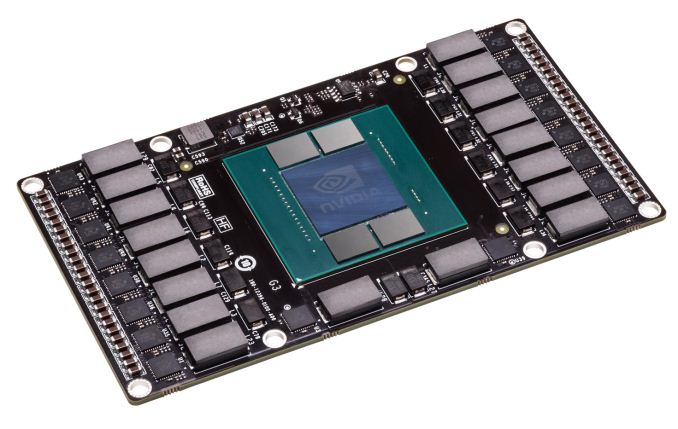
With apologies to AMD: NVIDIA’s Pascal Test Vehicle, An Example Of A Smaller, Non-Traditional Video Card Design
Finally, while talking about HBM on GPUs, AMD is also strongly hinting that they intend to bring HBM to other products as well. Given their product portfolio, we consider this to be a pretty transparent hint that the company wants to build HBM-equipped APUs. AMD’s APUs have traditionally struggled to reach peak performance due to their lack of memory bandwidth – 128-bit DDR3 only goes so far – so HBM would be a natural extension to APUs.
Read More ...
AMD Announces 6th Generation A-Series APU Branding - Carrizo Due This Quarter
Along with AMD’s roadmap announcements today at financial analyst day, AMD has also offered a brief update on the state of Carrizo, the company’s forthcoming next-generation mobile APU. Due for launch this year, AMD has just confirmed that Carrizo is ramping well and will be launching this quarter, though SKU details are not being provided at this time.
Meanwhile, AMD is also using the opportunity to announce their intended branding for Carrizo notebooks. These products will now be known as the 6th generation A-series, and will be featuring revised AMD badges to indicate this. AMD will be retaining the current FX/A10/A8 branding, with the only real change being the inclusion of the “6th generation” branding on the badges.
Badging aside, AMD still will have to face the fact that they’re launching a 28nm notebook APU versus Intel’s 14nm notebook CPUs, the company is once again banking on their strong GPU performance to help drive sales. Coupled with the combination of low power optimizations in Carrizo and full fixed-function hardware decoding of HEVC, and AMD will be relying on Carrizo to carry them through to 2016 and Zen.
Finally, though it will come a bit later in the year, AMD’s FAD update has also briefly mentioned their plans for their AMD Pro lineup and how Carrizo will impact it. In short, AMD will be leaning on a combination of Carrizo’s power gains, and their own security technology as found in the Pro APUs.
Read More ...
AMD’s 2016-2017 x86 Roadmap: Zen Is In, Skybridge Is Out
AMD’s CTO Mark Papermaster just left the stage at AMD’s 2015 Financial Analyst Day, and one of the first things he covered was AMD’s CPU technology roadmap for the next couple of years.
The big question on everyone’s mind over the last year has been AMD’s forthcoming x86 Zen CPU, developed by Jim Keller’s group, and Papermaster did not disappoint, opting to address the future of AMD’s x86 plans first and foremost. AMD is not releasing the complete details on Zen until closer to its launch in 2016, but today they are providing some basic details on the CPU’s abilities and their schedule for it.
In terms of features, AMD once again confirmed that they’re aiming for significantly higher performance, on the order of a 40% increase in Instruction Per Clock (IPC) throughput. In a significant shift in threading for AMD’s x86 CPUs, Zen will also shift from Bulldozer’s Clustered Multithreading (CMT) to Simultanious Multithreading (SMT, aka Intel’s Hyperthreading). CMT is the basis for Bulldozer’s unusual combination of multiple integer cores sharing a single FPU within a module, so the move to SMT is a more “traditional” design for improving resource usage, and it means Zen will similarly have a more traditional resource layout. AMD is also labeling Zen’s cache as a “high-bandwidth, low latency cache system,” though at this time they aren’t quantifying just how that differs from the Dozer family’s cache.
Meanwhile AMD has confirmed that Zen will be shipping in 2016, and that it will be produced on a yet-to-be-named FinFET process. Our bet would be that AMD continues to use traditional partner (and spin-off fab) GlobalFoundries, who will be ramping up their 14nm equipment for next year as part of their licensing/partnership with Samsung to implement Samsung’s 14nm FinFET process. Zen at this time is AMD’s priority, to the point where the company is willing to push back the ARM K12 in order to get Zen out the door first.
Desktop users will be happy to know that the first Zen processor out the door will be AMD’s high-end desktop CPU (AMD was very deliberate in this, it’s not an APU). AMD will be aiming high and then cascading Zen down into APUs and lower-end products.
Said Zen CPU will use a new AMD platform – AM4 – which will also support DDR4. Unlike the Dozer family, all of AMD’s desktop CPUs will use the same AM4 platform/socket, so when AMD does ramp up their Zen APU, it too will be on AM4 and not its own socket, simplifying the process.
Finally, AMD’s roadmap for Zen over 2016-2017 calls for further improved Zen cores, “Zen+”, later on. Though the biggest jump for AMD comes from the transition from Dozer to Zen, the company is looking to push the envelope on IPC harder than they did with the Dozer family, projecting a higher increase in IPC over time than what we saw with the Dozer parts.
As for what this means for single-threaded performance, that remains to be seen. After having chased a lower-IPC/higher-clockspeed strategy in an attempt to do something different from Intel – the AMD that designed Bulldozer thought it wise not to try to beat well-funded Intel at their own game – the focus on higher IPC is arguably the correct move to make as the laws of physics have continued to keep 5GHz+ clockspeeds from being efficient enough to be practical. That said, single-threaded performance is a combination of IPC and clockspeed, so to be competitive with Intel AMD needs to deliver higher IPC while maintaining relatively high clockspeeds, and the latter is not something AMD is disclosing this early in the process.
Finally, we’ll note that this roadmap is empty of any mentions of project Skybridge. CEO Lisa Su has commented that AMD has decided to change their focus away from Skybridge based on customer feedback. Customers were telling AMD that they didn't necessarily need socket compatible solutions, so AMD is going to work on differentiated solutions. That said, given that Skybridge was announced last year and planned for 20nm, I suspect that it has also become a victim of the short lifespan (and underperforming nature) of 20nm, leading to it being downplayed in favor of 14nm prodcts.
Meanwhile also absent was any further mention of AMD's Cat cores. Zen would appear to be AMD’s top-to-bottom x86 core, a significant departure from an AMD who previously wanted separate designs for the 10W-100W market and sub-10W markets.
Read More ...
AMD’s 2016 GPU Roadmap: FinFET & High Bandwidth Memory
Along with updating their x86 and CPU roadmaps, AMD has also offered a brief update on their GPU roadmap. Unfortunately unlike 2012 we’re not going to get anything quite like the HSA feature roadmap, which projected features out for the next few years, but AMD is opening up on what is in store for 2016.
First and foremost, 2016 will be the year of FinFET across AMD, both for the CPU and GPU. Just like Zen, AMD will have GPUs on an unnamed FinFET process in 2016. AMD isn’t saying much else about 2016 at this point in terms of chips or architecture, but they are saying that the combination of the 2016 architecture and the use of FinFET will result in a 2x improvement in energy efficiency over what AMD is calling their “previous generation GPU” (though it’s not clear if it’s relative to an existing GPU or something else due in 2015). Based on AMD’s comments, it sounds like the majority of these gains will come from the use of the newer manufacturing process, as opposed to architectural efficiency gains. AMD is also mum on which fab will be building this GPU, however the timeframe is such that it lines up with TSMC’s 16nm FinFET plans, with TSMC being AMD’s traditional fab of choice for GPUs.
Meanwhile after the circulation of a number of rumors, AMD has confirmed that they will be shipping GPUs with High Bandwidth Memory (HBM) technology. HBM involves stacking DRAM dies on top of each other, and then locating them next to or on top of a processor, the close proximity allowing for a very wide, very high bandwidth memory bus. AMD isn’t saying what absolute performance is like at this time, but HBM should better than triple their memory perf-per-watt compared to GDDR5, with a better than 50% reduction in power consumption.
AMD’s roadmap and diagrams also make it clear that we’re looking at a 2.5D solution; that is, HBM RAM stacks organized around a processor rather than on top of it. These stacks are then routed to the processor based on an interposer layer that both the RAM stacks and processor sit in, and the interposer itself sits above the traditional package substrate. Given the high thermal output of high-end GPUs, this is what we’d expect as putting RAM on top of the GPU would make it that much harder to cool.
Finally, AMD is stating that they expect to be the first vendor to deploy HBM, meaning that we’re looking at a launch of an HBM-equipped video card sooner than NVIDIA’s Pascal, which was previously announced to be using the same technology.
Read More ...
Oculus Rift and Compatible Gaming Rig Will Likely Cost $1,000 or More
Oculus VR unveils finished design, targets 2016 launch; price is still unknown
Read More ...
Microsoft Bricks the Xbox Ones of Gears of War Testers Responsible for Leaks
This may be the first instance where Microsoft has leveraged its ability to freeze out someone's legally purchased console
Read More ...
Windows 10 Mobile Build 10080 is Available for New Phones, Brings Office Preview
Users with compatible devices may be able to enroll for the first time as fast ring testers -- beware the known bugs, though
Read More ...
Are "Keyless Entry" Hacks Really the Source of Recent Car Break Ins?
My investigation did reveal some Chinese sites selling devices which claimed to be able to detect and amplify car key signals at range
Read More ...
Google Accidentally Leaks Teaser for Upcoming Android 'M'
New OS build may arrive at this year's I/O event
Read More ...
Google's Gleaming Glass HQ Gets Mountain View Snub, LinkedIn Gets the Love
Google ponders "should it stay or should it go" after Mountain View city council largely denies its expansion requests
Read More ...
Leak Shows Possible Super Sentinel Spy Drone Receiving a Boom In-Air Refuel
This new "Super Sentinel" could stay aloft for weeks with help from local fuel tankers
Read More ...
Report: Xbox One Gets DVR Functionality, in Media Center Replacement Bid
Meanwhile Microsoft confirms the death of Windows Media Center, confirms DVD playback functionality will be replaced
Read More ...
Rombertik is a Bizarre, Scary Brilliant Piece of Self-Destructing Malware
While its chief goal is to watch your web traffic, it goes about that goal in remarkable fashion
Read More ...
Android Lollipop Nears 10 Percent Market Penetration After Half a Year in the Wild
Lollipop brings with it a new direct update initiative for core services -- but Google has to get customers on the OS to benefit
Read More ...
Microsoft Quietly Kills Windows Media Center, Hypes Xbox One as Replacement
Windows 10 should help the Xbox One close some of the gaps vs. a Windows 7 HTPC w/ Media Center, but will die-hards buy in?
Read More ...
America's Largest Cable Company, Comcast, Sees Internet Subscriptions Pass TV
Cable TV is still an important market, but it's getting slowly overshadowed in the internet age
Read More ...
Quick Note: Microsoft Windows 10 Gives Users the Finger (Literally)
In addition to the new middle finger emoji, there's also new "classic" style yellow face emojis, and even the Vulcan salute
Read More ...
China's Tencent Gets in on the Kardashian Empire w/ $126 Million Glu Investment
Deal is good for roughly 1/7th of shares of the maker of hit mobile game "Kim Kardashian Hollywood"
Read More ...
Worst Kept Secret -- $35 Million Anonymous Sharing App Startup Shuts Down
App scored some high profile backers, but struggled to retain users let alone achieve a path to monetization
Read More ...
Microsoft "Welcomes Developers" to Its New "Edge Browser" (Codename: Spartan)
From extensions to its design language, Microsoft is making the right moves
Read More ...
Leather-Bound LG G4 Shuffles Out, "Specially Designed" Snapdragon 808 SoC
Ceramic and metallic options also available; flagship model will launch by June and be priced at around $750 USD; QHD still standard
Read More ...
Ding Dong the Deal is Dead: What's Next After Failed Comcast/TWC Merger
Netflix factor was crucial in killing deal; collapse also kills Bright House purchase; AT&T/DirecTV merger prospects remain strong
Read More ...
Windows 10 Build 10061: A Quick Review
The latest test build finally fixing the glaring flaw in superfluous backups, freeing up 25+ GB; Recycling Bin also gets a new look
Read More ...
Quick Note: Lady Macbath -- One Japanese Woman's Apple Themed Revenge
After her boyfriend cheated on her, Japanese woman hit her significant other where it her -- his Apple treasure trove
Read More ...
Colorado Man Cited for "Killing His Computer" With a Handgun
BSOD drove man to take decisive action against his uncooperative Dell desktop
Read More ...
Newly Discovered Costa Rican Glass Frog is Kermit's Doppelgänger
Tiny frog is the first new glass frog discovered in Costa Rica in more than four decades
Read More ...
Even Hillary Clinton Was Addicted to Nintendo Gameboy
No word on whether she mastered "Pokemon: Blue", though
Read More ...
Available Tags:ASRock , DDR4 , Windows Phone , LG , Windows , Gaming , AnandTech , AMD , Radeon , Intel , Xeon , NVIDIA , Dell , Router , Notebook , GPU , APU , Microsoft , Xbox , Google , Android , Xbox , Android , Xbox , TV , Apple , His , Nintendo ,

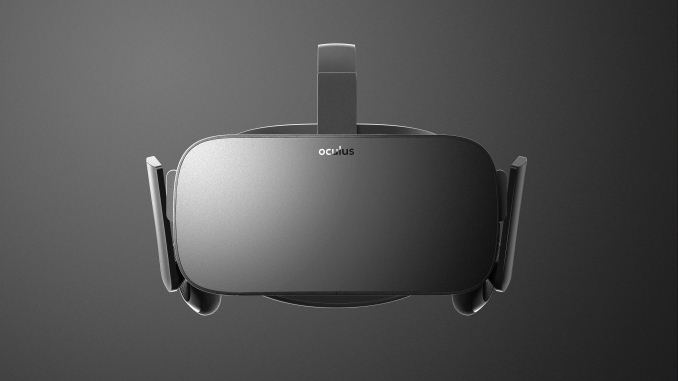
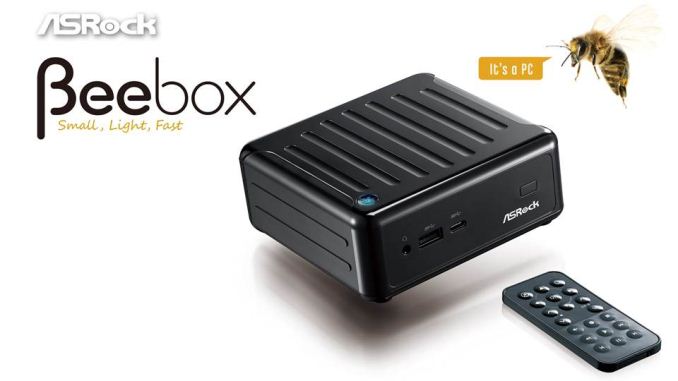
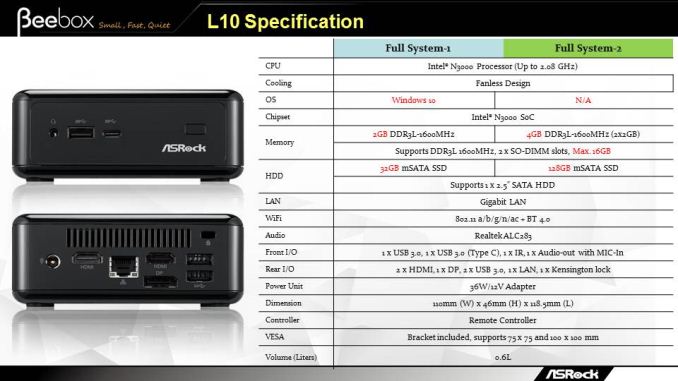
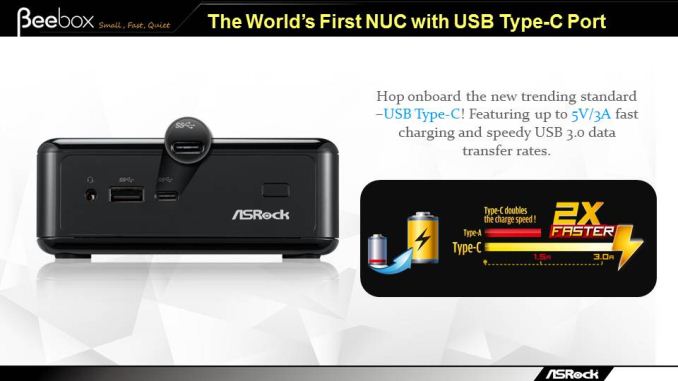
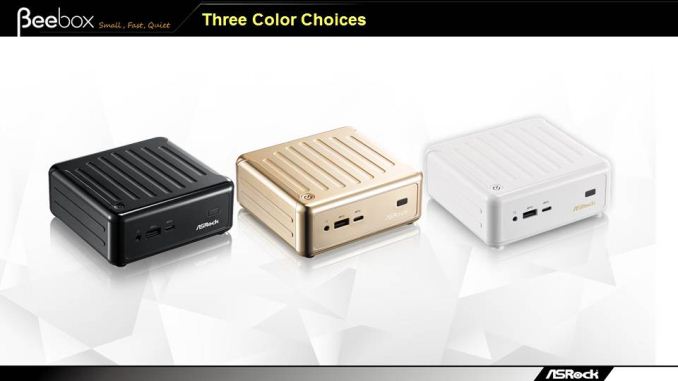






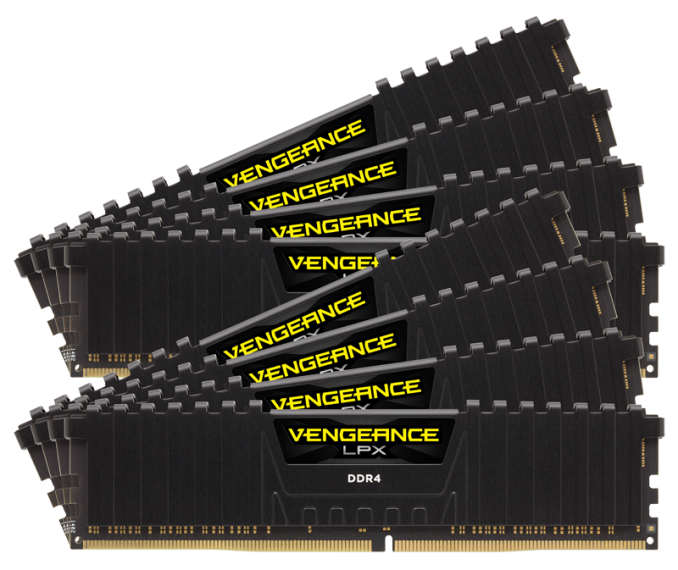
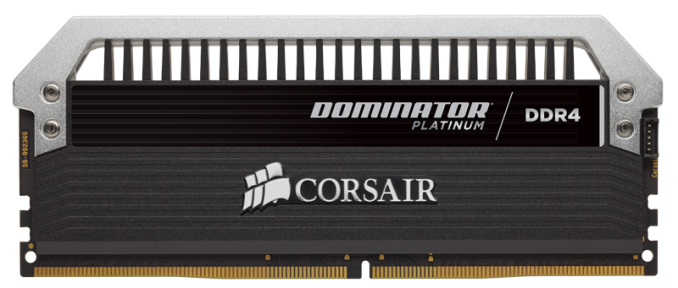
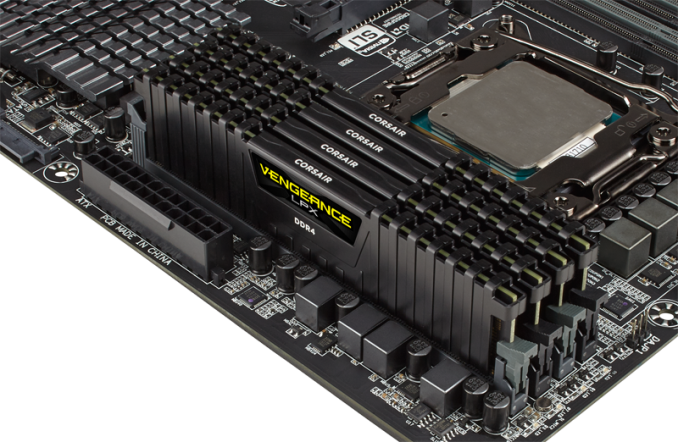






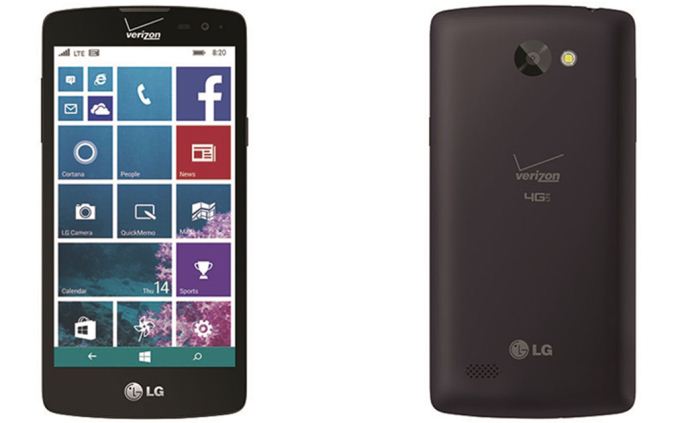



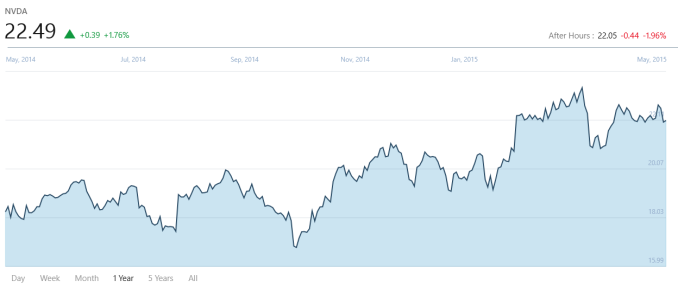

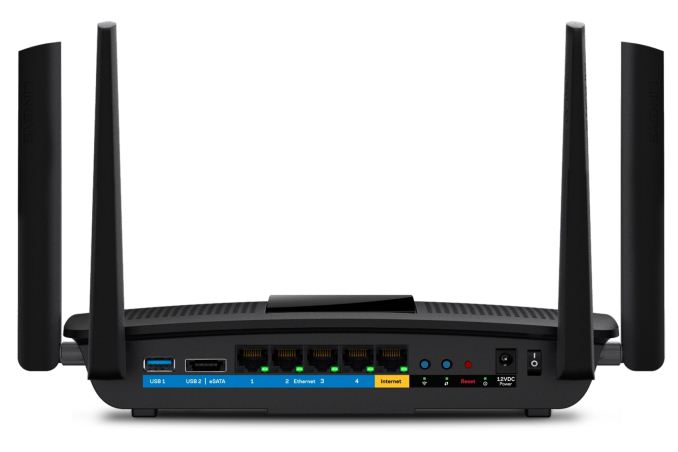
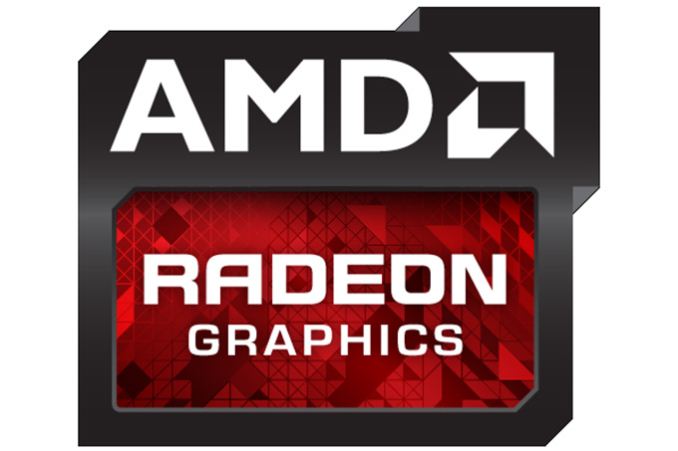
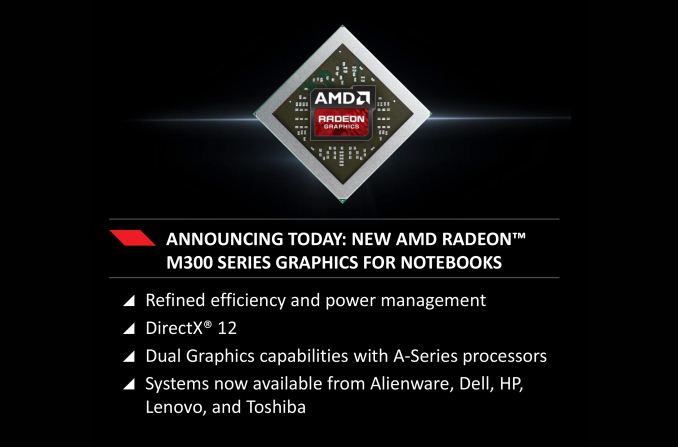





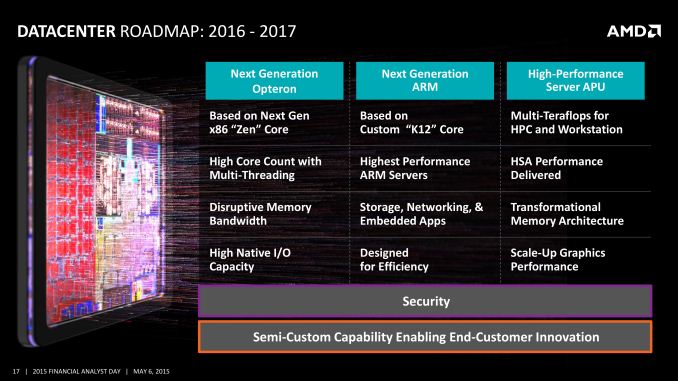
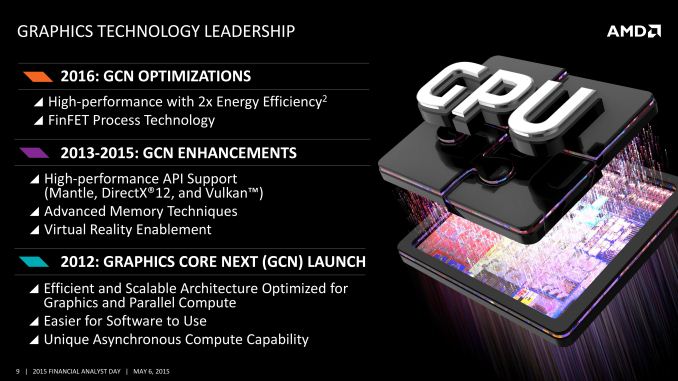
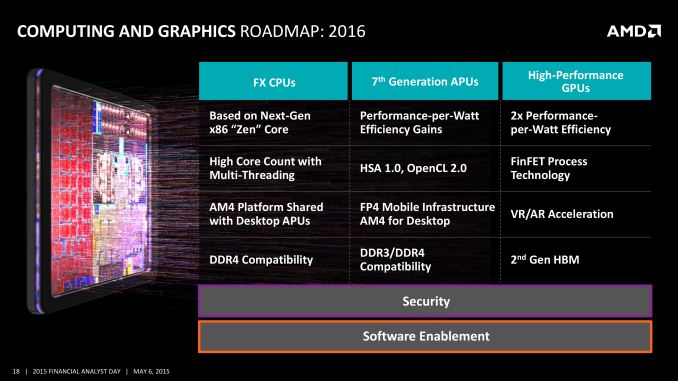













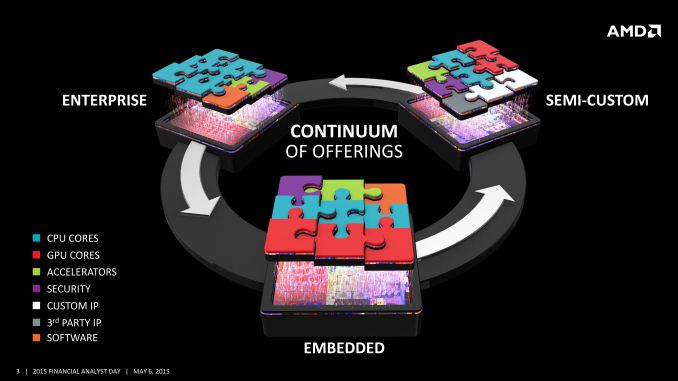








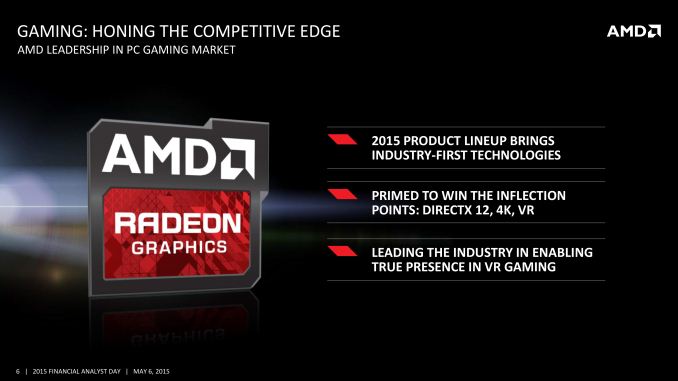
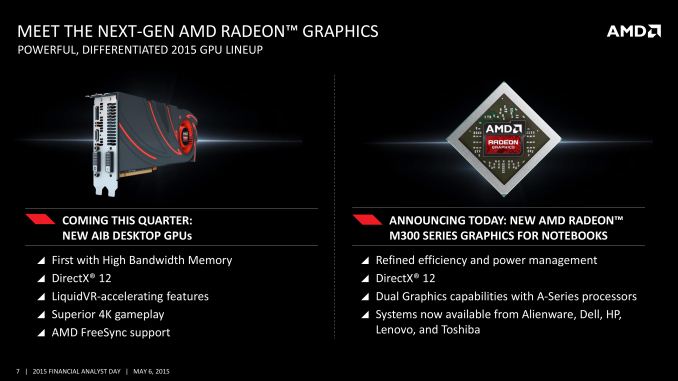
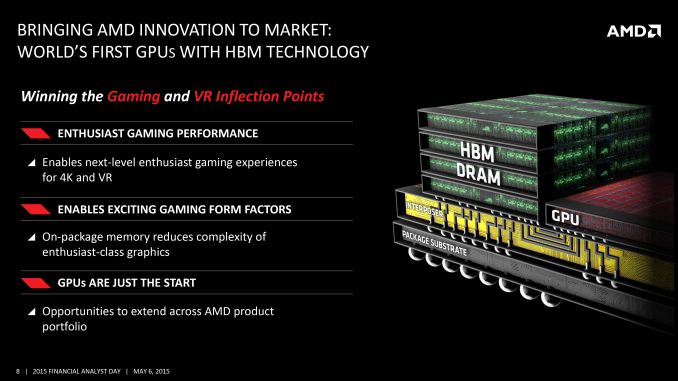
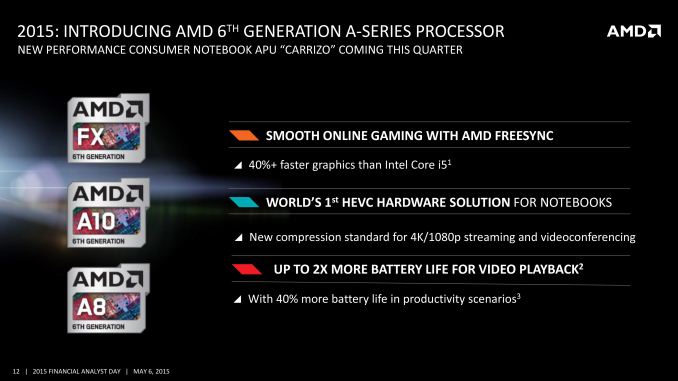
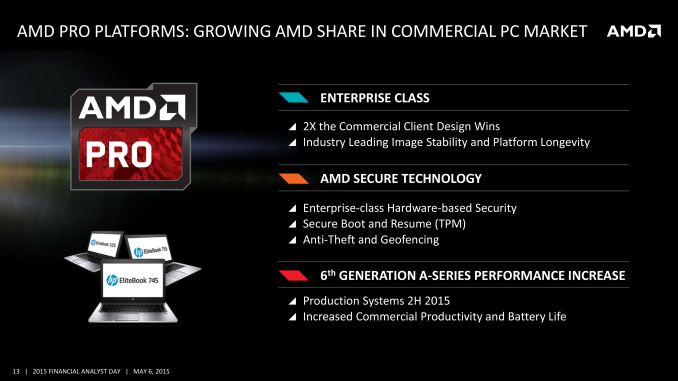
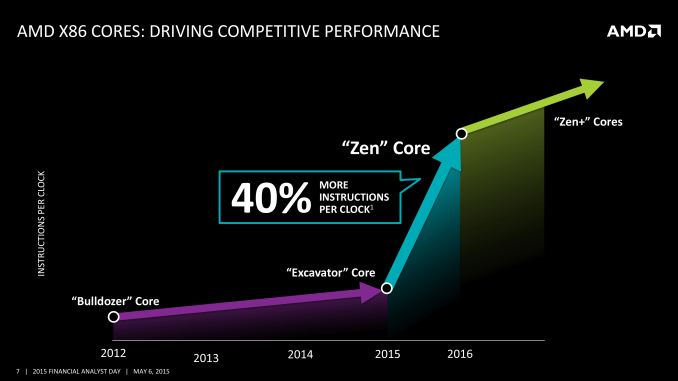
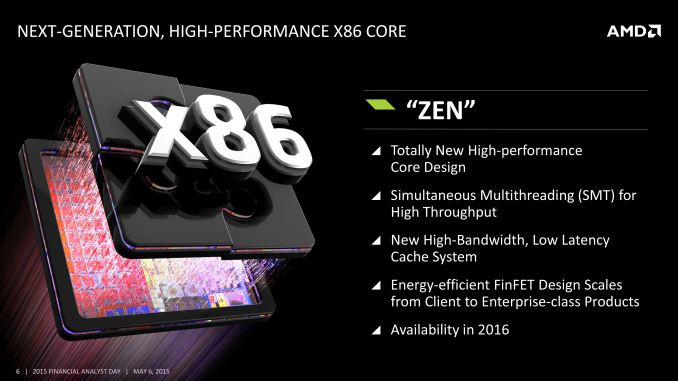
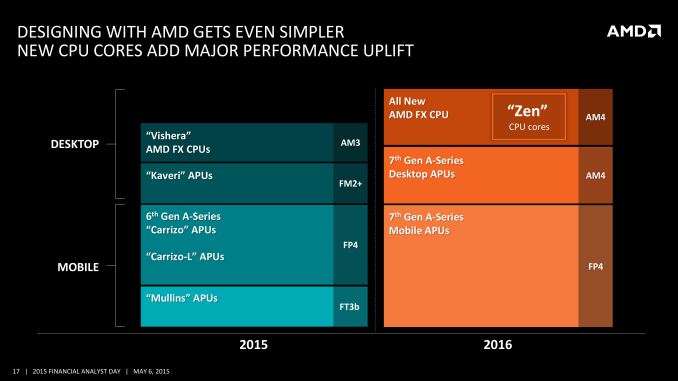



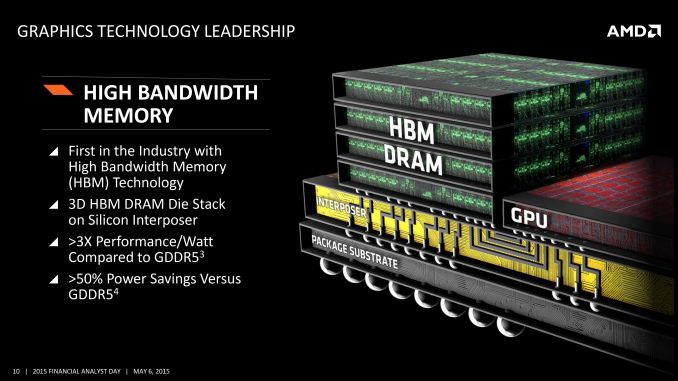

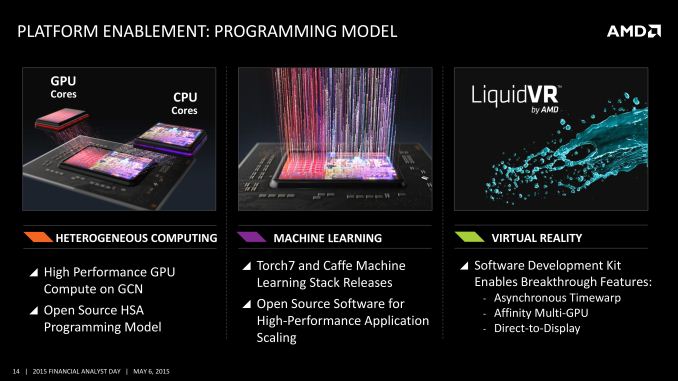
No comments:
Post a Comment